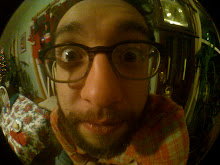So ive been working on my next project, and ive been kicking around this idea. I was thinking while i was lost in chicago the other day that it would really handy if a had a compass right now. So i was pondering the idea of a compass and started thinking about GPS systems. Predominately how much i hate the things. I know not every one grew up a boy scout like me, but i can figure out the general direction by just looking at the position of the the sun.
Compass vs. TOM TOM
Analog vs. Digital
Analog-Analog recording methods store audio signals as a continual wave in or on the media. The wave might be stored as a physical texture on a phonograph record, or a fluctuation in the field strength of a magnetic recording. This is different from digital recording, which converts audio signals into discrete numbers.
Digital- video or sound is converted into a stream of discrete numbers, representing the changes in chroma and luminance values (video) or air pressure (audio) through time, thus making an abstract template for the original sound or moving image.
Difference: analog information is recorded and stored as a physical document; i.e. an LP or Film. Digital recording is converted into binary code (010101010101). This method doesn’t register all frequencies and thus round the wave-lengths up or down in a mathematical manner, thus resulting in an approximation of the original recording.
Compass’ (Analog)
Dry Compass-The dry mariner's compass was invented in Europe around 1300. The dry mariner's compass consists of three elements: A freely pivoting needle on a pin enclosed in a little box with a glass cover and a wind rose, whereby "the wind rose or compass card is attached to a magnetized needle in such a manner that when placed on a pivot in a box fastened in line with the keel of the ship the card would turn as the ship changed direction, indicating always what course the ship was on". Later, compasses were often fitted into a gimbal mounting to reduce grounding of the needle or card when used on the pitching and rolling deck of a ship.
Bearing Compass- is a magnetic compass mounted in such a way that it allows the taking of bearings of objects by aligning them with the lubber line of the bearing compass. The bearing compass was steadily reduced in size and weight to increase portability, resulting in a model that could be carried and operated in one hand. In 1885, a patent was granted for a hand compass fitted with a viewing prism and lens that enabled the user to accurately sight the heading of geographical landmarks, thus creating the prismatic compass. Another sighting method was by means of a reflective mirror. First patented in 1902, the Bézard compass consisted of a field compass with a mirror mounted above it. This arrangement enabled the user to align the compass with an objective while simultaneously viewing its bearing in the mirror.
Hand Bearing Compass- is a term for any compact magnetic compass capable of one-hand use and fitted with a sighting device to record a precise bearing or azimuth to a given target or to determine a location.
Liquid Compass- is a design in which the magnetized needle or card is damped by fluid to protect against excessive swing or wobble, improving readability while reducing wear. A rudimentary working model of a liquid compass was introduced by Sir Edmund Halley at a meeting of the Royal Society in 1690. However, as early liquid compasses were fairly cumbersome and heavy, and subject to damage, their main advantage was aboard ship. Protected in a binnacle and normally gimbal-mounted, the liquid inside the compass housing effectively damped shock and vibration, while eliminating excessive swing and grounding of the card caused by the pitch and roll of the vessel
GPS: tom tom and garmin…
GPS-s a U.S. space-based global navigation satellite system. It provides reliable positioning, navigation, and timing services to worldwide users on a continuous basis in all weather, day and night, anywhere on or near the Earth. GPS is made up of three parts: between 24 and 32 satellites orbiting the Earth, four control and monitoring stations on Earth, and the GPS receivers owned by users. GPS satellites broadcast signals from space that are used by GPS receivers to provide three-dimensional location (latitude, longitude, and altitude) plus the time.




